Project
Aloha DLS
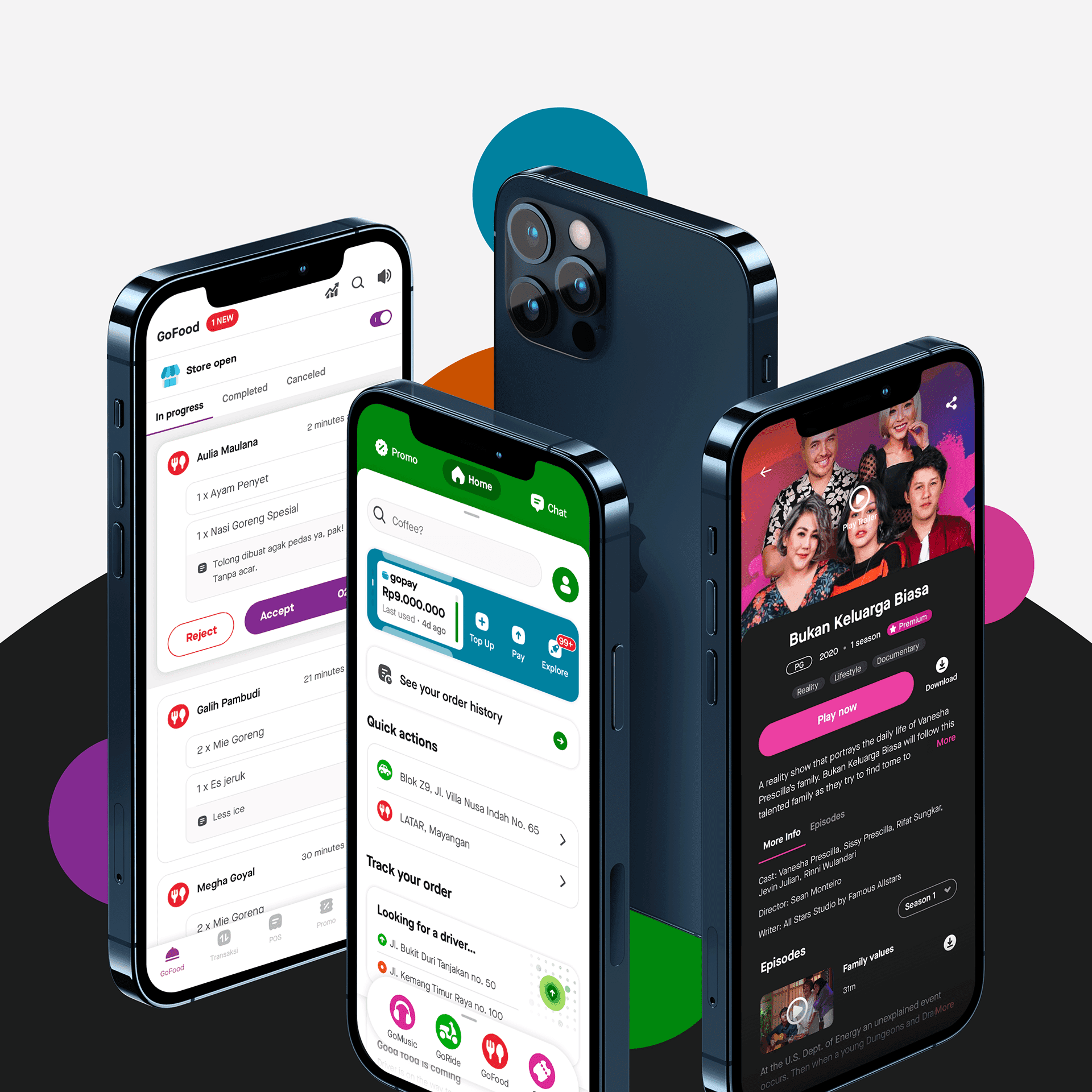
Client:
Gojek
Date:
Jul 20, 2020
Category:
Design Language System
Beyond Aesthetics: The Gojek Design Language System
After the meticulous effort in building the brand direction, it was important to capture the design direction in the most important touchpoint: the product. While rebuilding the brand, we already understood the need for a Design Language System (DLS), as Gojek extends beyond its services more than any online platform we know. Maintaining design consistency was one of the first problem statements, but we considered an approach beyond that. The DLS, which we named 'Aloha,' made the design process more efficient and equipped us to build multiple versions in the future.
Approach:
Multiple teams had to come together to form a core task force to develop the language system for Gojek. The approach began by understanding the product's current and future needs. The research team contributed to a better understanding of user behavior and needs, and we built the system based on the framework created for designing the brand. The project commenced with the redesign of the Gojek home screen, and after numerous rounds of testing and validation, we finalized the design and derived components from it. These fundamental components aided us in constructing other elements for various screens to define interactions.
My Role :
Building the design foundations:
To start the exercise in building to construct the Design Language System (DLS) required a solid foundation in design directions, primarily derived from the brand. Defining design principles and establishing fundamental design elements enabled the team to address multiple problem statements concurrently. While the interaction team defined components, the motion design team focused on crafting micro-interactions.
Identifying, defining, and designing:
Identifying, defining, and designing the design components was essential to help the brand and product establish a consistent visual language. This involved creating typographic layouts, icon libraries, color systems, illustration, and photography libraries, among other elements. Once these fundamental building blocks were defined and designed, the entire interface was constructed using them. When the need arose for new sets of components, we could derive them based on the provided guidelines
Expanding the system:
Expanding the Design Language System (DLS) to accommodate new requirements and design upgrades was a natural progression of our design journey. As the brand and product continued to evolve, we encountered new challenges and opportunities. Our DLS acted as a flexible framework, allowing us to seamlessly incorporate fresh design elements, such as updated typography, additional icons, and refined color schemes. It ensured that our design remained cohesive and on-brand, while also adapting to the ever-changing needs of our users and the market. This iterative process enabled us to maintain a modern and consistent visual language that stayed in sync with Gojek's growth and innovation.
Solution:
The final outcome of the Asphalt Design Language System (DLS) showcased our design team's dedication and innovation. We successfully developed a versatile framework that provided a unified visual identity across Gojek's platforms. Our solution not only enhanced the user experience but also improved efficiency in design and development. This DLS served as a cornerstone for Gojek's brand consistency, enabling seamless adaptability to new requirements and design upgrades while maintaining a fresh and memorable brand presence.

Our DLS is the result of crafting a unified visual identity, allowing us to explore endless design possibilities while maintaining brand consistency. It plays a pivotal role in shaping a seamless and memorable user experience across our platforms.
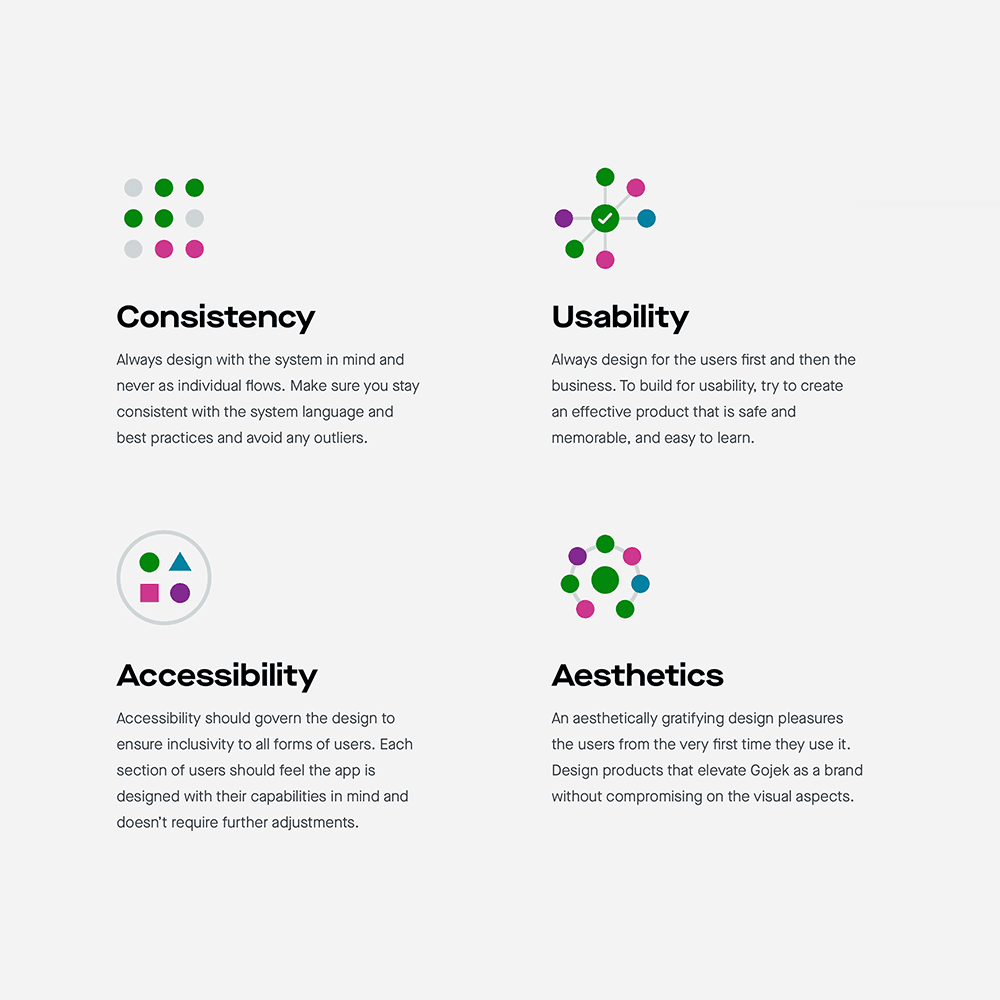
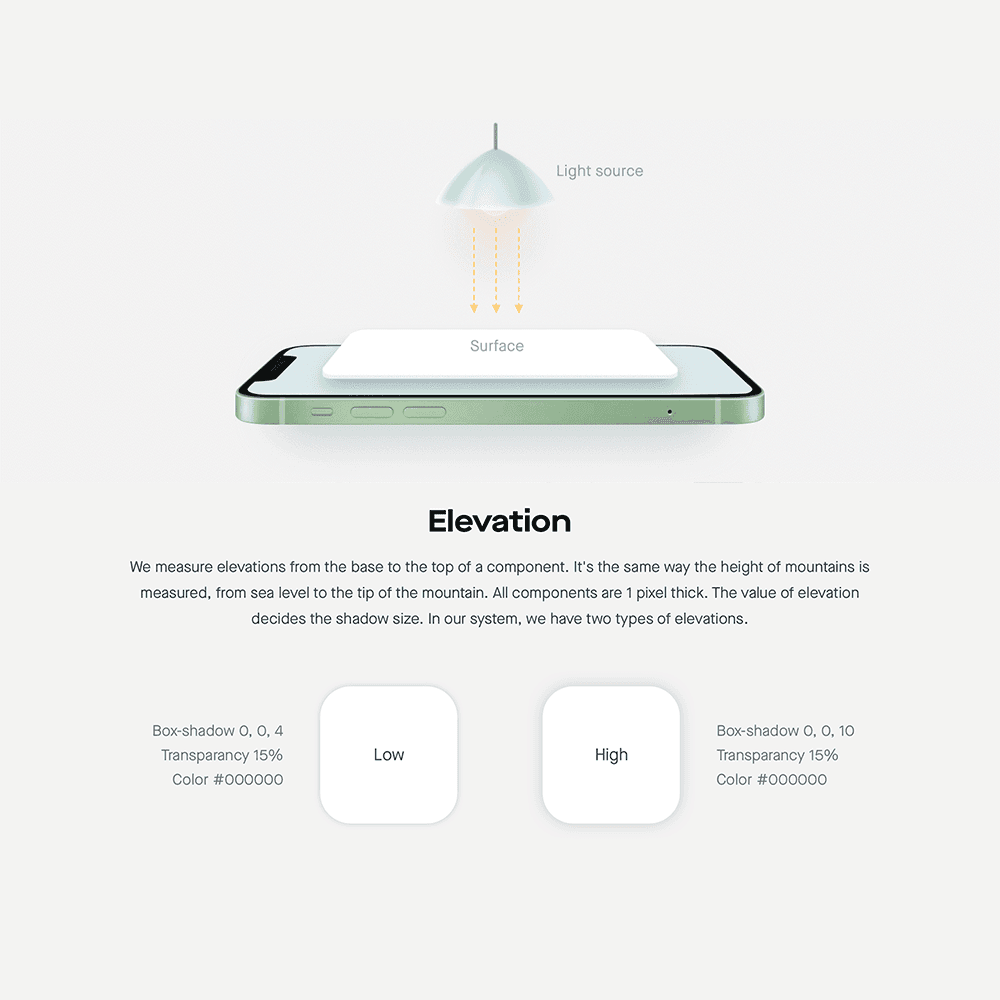
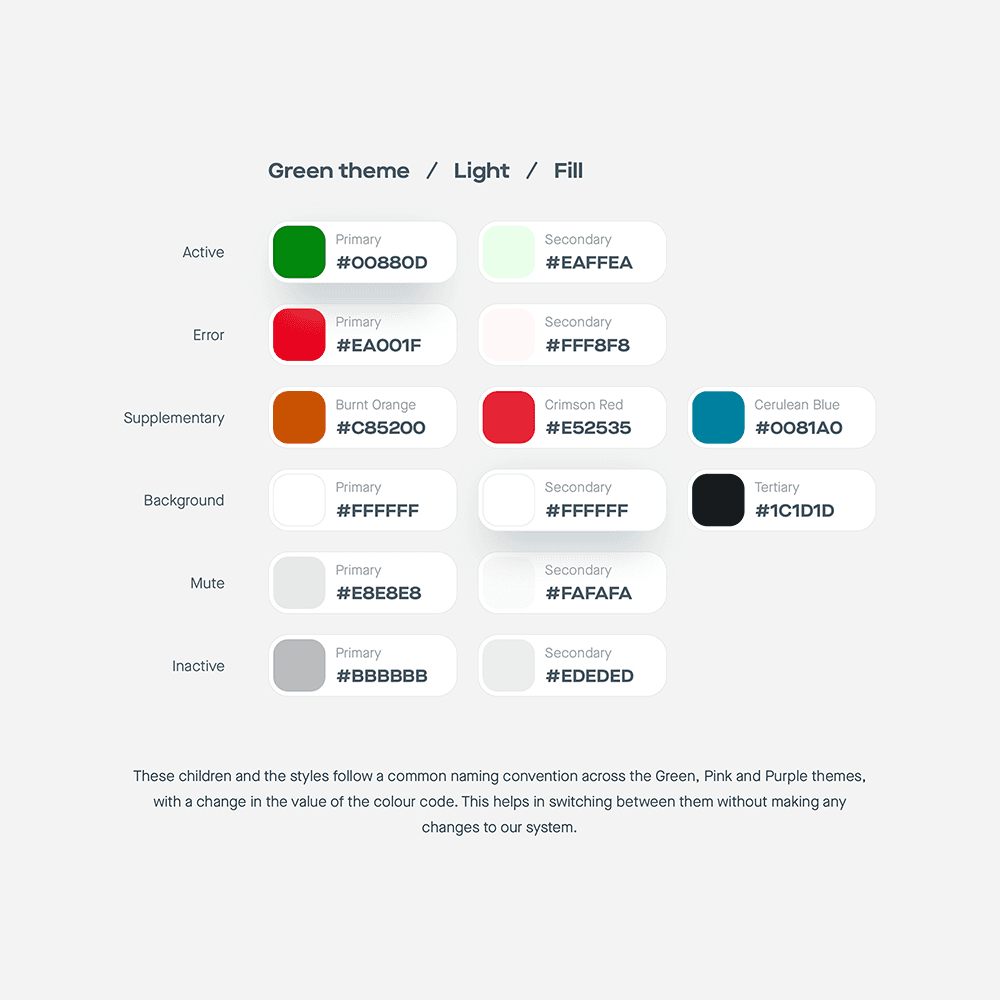
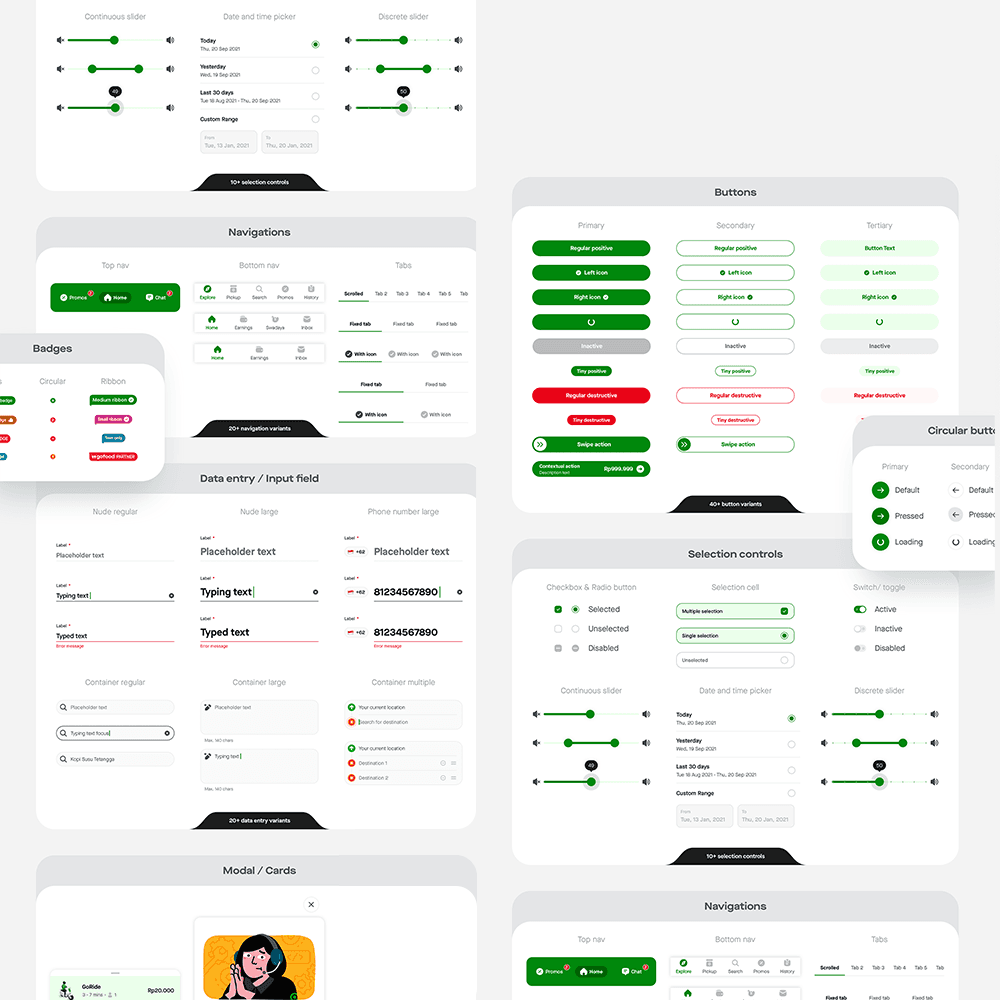

Client:
Gojek
Date:
Jul 20, 2020
Category:
Design Language System
Beyond Aesthetics: The Gojek Design Language System
After the meticulous effort in building the brand direction, it was important to capture the design direction in the most important touchpoint: the product. While rebuilding the brand, we already understood the need for a Design Language System (DLS), as Gojek extends beyond its services more than any online platform we know. Maintaining design consistency was one of the first problem statements, but we considered an approach beyond that. The DLS, which we named 'Aloha,' made the design process more efficient and equipped us to build multiple versions in the future.
Approach:
Multiple teams had to come together to form a core task force to develop the language system for Gojek. The approach began by understanding the product's current and future needs. The research team contributed to a better understanding of user behavior and needs, and we built the system based on the framework created for designing the brand. The project commenced with the redesign of the Gojek home screen, and after numerous rounds of testing and validation, we finalized the design and derived components from it. These fundamental components aided us in constructing other elements for various screens to define interactions.
My Role :
Building the design foundations:
To start the exercise in building to construct the Design Language System (DLS) required a solid foundation in design directions, primarily derived from the brand. Defining design principles and establishing fundamental design elements enabled the team to address multiple problem statements concurrently. While the interaction team defined components, the motion design team focused on crafting micro-interactions.
Identifying, defining, and designing:
Identifying, defining, and designing the design components was essential to help the brand and product establish a consistent visual language. This involved creating typographic layouts, icon libraries, color systems, illustration, and photography libraries, among other elements. Once these fundamental building blocks were defined and designed, the entire interface was constructed using them. When the need arose for new sets of components, we could derive them based on the provided guidelines
Expanding the system:
Expanding the Design Language System (DLS) to accommodate new requirements and design upgrades was a natural progression of our design journey. As the brand and product continued to evolve, we encountered new challenges and opportunities. Our DLS acted as a flexible framework, allowing us to seamlessly incorporate fresh design elements, such as updated typography, additional icons, and refined color schemes. It ensured that our design remained cohesive and on-brand, while also adapting to the ever-changing needs of our users and the market. This iterative process enabled us to maintain a modern and consistent visual language that stayed in sync with Gojek's growth and innovation.
Solution:
The final outcome of the Asphalt Design Language System (DLS) showcased our design team's dedication and innovation. We successfully developed a versatile framework that provided a unified visual identity across Gojek's platforms. Our solution not only enhanced the user experience but also improved efficiency in design and development. This DLS served as a cornerstone for Gojek's brand consistency, enabling seamless adaptability to new requirements and design upgrades while maintaining a fresh and memorable brand presence.

Our DLS is the result of crafting a unified visual identity, allowing us to explore endless design possibilities while maintaining brand consistency. It plays a pivotal role in shaping a seamless and memorable user experience across our platforms.





Client:
Gojek
Date:
Jul 20, 2020
Category:
Design Language System
Beyond Aesthetics: The Gojek Design Language System
After the meticulous effort in building the brand direction, it was important to capture the design direction in the most important touchpoint: the product. While rebuilding the brand, we already understood the need for a Design Language System (DLS), as Gojek extends beyond its services more than any online platform we know. Maintaining design consistency was one of the first problem statements, but we considered an approach beyond that. The DLS, which we named 'Aloha,' made the design process more efficient and equipped us to build multiple versions in the future.
Approach:
Multiple teams had to come together to form a core task force to develop the language system for Gojek. The approach began by understanding the product's current and future needs. The research team contributed to a better understanding of user behavior and needs, and we built the system based on the framework created for designing the brand. The project commenced with the redesign of the Gojek home screen, and after numerous rounds of testing and validation, we finalized the design and derived components from it. These fundamental components aided us in constructing other elements for various screens to define interactions.
My Role :
Building the design foundations:
To start the exercise in building to construct the Design Language System (DLS) required a solid foundation in design directions, primarily derived from the brand. Defining design principles and establishing fundamental design elements enabled the team to address multiple problem statements concurrently. While the interaction team defined components, the motion design team focused on crafting micro-interactions.
Identifying, defining, and designing:
Identifying, defining, and designing the design components was essential to help the brand and product establish a consistent visual language. This involved creating typographic layouts, icon libraries, color systems, illustration, and photography libraries, among other elements. Once these fundamental building blocks were defined and designed, the entire interface was constructed using them. When the need arose for new sets of components, we could derive them based on the provided guidelines
Expanding the system:
Expanding the Design Language System (DLS) to accommodate new requirements and design upgrades was a natural progression of our design journey. As the brand and product continued to evolve, we encountered new challenges and opportunities. Our DLS acted as a flexible framework, allowing us to seamlessly incorporate fresh design elements, such as updated typography, additional icons, and refined color schemes. It ensured that our design remained cohesive and on-brand, while also adapting to the ever-changing needs of our users and the market. This iterative process enabled us to maintain a modern and consistent visual language that stayed in sync with Gojek's growth and innovation.
Solution:
The final outcome of the Asphalt Design Language System (DLS) showcased our design team's dedication and innovation. We successfully developed a versatile framework that provided a unified visual identity across Gojek's platforms. Our solution not only enhanced the user experience but also improved efficiency in design and development. This DLS served as a cornerstone for Gojek's brand consistency, enabling seamless adaptability to new requirements and design upgrades while maintaining a fresh and memorable brand presence.

Our DLS is the result of crafting a unified visual identity, allowing us to explore endless design possibilities while maintaining brand consistency. It plays a pivotal role in shaping a seamless and memorable user experience across our platforms.



